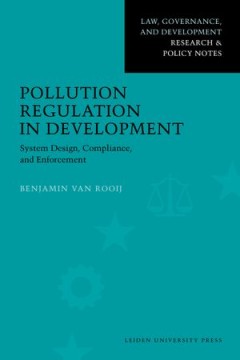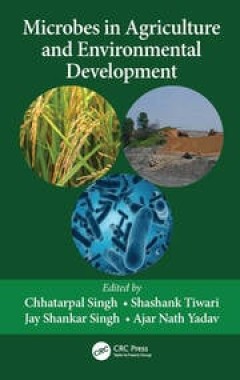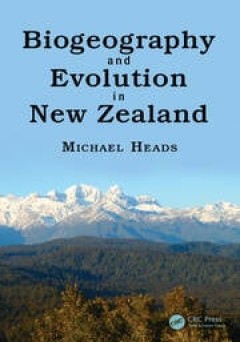Filter by

Building for the Ages: Egyptian-Themed Board Games
- Edition
- -
- ISBN/ISSN
- 9780262373449
- Collation
- -
- Series Title
- -
- Call Number
- -
- Edition
- -
- ISBN/ISSN
- 9780262373449
- Collation
- -
- Series Title
- -
- Call Number
- -

Hostile Architecture: Burgle Bros., Interdiction, and Spatial Politics
- Edition
- -
- ISBN/ISSN
- 9780262373449
- Collation
- -
- Series Title
- -
- Call Number
- -
- Edition
- -
- ISBN/ISSN
- 9780262373449
- Collation
- -
- Series Title
- -
- Call Number
- -

Architectural Modernity and the Consciousness Called the Present
- Edition
- -
- ISBN/ISSN
- 9780262278911
- Collation
- -
- Series Title
- -
- Call Number
- -
- Edition
- -
- ISBN/ISSN
- 9780262278911
- Collation
- -
- Series Title
- -
- Call Number
- -

Learning from agri-environment schemes in Australia: Investing in biodiversit…
Learning from agri-environment schemes in Australia is a book about the birds and the beef — more specifically it is about the billions of dollars that governments pay farmers around the world each year to protect and restore biodiversity. After more than two decades of these schemes in Australia, what have we learnt? Are we getting the most out of these investments, and how should we do thin…
- Edition
- -
- ISBN/ISSN
- 9781760460150
- Collation
- -
- Series Title
- -
- Call Number
- -

Microbes in Agriculture and Environmental Development
The collection of essays in Microbes in Agriculture and Environmental Development explores the applications of microbes for the improvement of environmental quality and agricultural productivity through inoculants and enzymes. These are useful for the conservation and restoration of degraded natural and agricultural ecosystems, crop yield extension, soil health improvement, and other aspects of…
- Edition
- -
- ISBN/ISSN
- -
- Collation
- -
- Series Title
- -
- Call Number
- -

Handbook of Marine Model Organisms in Experimental Biology
The importance of molecular approaches for comparative biology and the rapid development of new molecular tools is unprecedented. The extraordinary molecular progress belies the need for understanding the development and basic biology of whole organisms. Vigorous international efforts to train the next-generation of experimental biologists must combine both levels – next generation molecular …
- Edition
- -
- ISBN/ISSN
- -
- Collation
- -
- Series Title
- -
- Call Number
- -

Management of Animal Care and Use Programs in Research, Education, and Testing
AAP Prose Award Finalist 2018/19 Management of Animal Care and Use Programs in Research, Education, and Testing, Second Edition is the extensively expanded revision of the popular Management of Laboratory Animal Care and Use Programs book published earlier this century. Following in the footsteps of the first edition, this revision serves as a first line management resource, providing for st…
- Edition
- -
- ISBN/ISSN
- -
- Collation
- -
- Series Title
- -
- Call Number
- -

Biogeography and Evolution in New Zealand
Biogeography and Evolution in New Zealand provides the first in-depth treatment of the biogeography of New Zealand, a region that has been a place of long-enduring interest to ecologists, evolutionary scientists, geographers, geologists, and scientists in related disciplines. It serves as a key addition to the contemporary discussion on regionalization—how is New Zealand different from the re…
- Edition
- -
- ISBN/ISSN
- -
- Collation
- -
- Series Title
- -
- Call Number
- -

Natural History of the Farm: A Guide to the Practical Study of the Sources of…
This is a guide to the practical study of the sources in wild nature of our living. It contains a series of study outlines for the entire year, and deals with both the plants and animals of the farm-the things that men have chosen to deal with as a means of livelihood and of personal satisfaction in all ages.
- Edition
- -
- ISBN/ISSN
- 9781501740770
- Collation
- 354 p
- Series Title
- -
- Call Number
- 508

North American Cornucopia
Many North American plants have characteristics that are especially promising as candidates for expanding our food supply and generating new economically competitive crops. This book is an informative analysis of the top 100 indigenous food plants of North America, focusing on those species that have achieved commercial success or have substantial market potential. The book's user-friendly form…
- Edition
- -
- ISBN/ISSN
- -
- Collation
- -
- Series Title
- -
- Call Number
- -
 Computer Science, Information & General Works
Computer Science, Information & General Works  Philosophy & Psychology
Philosophy & Psychology  Religion
Religion  Social Sciences
Social Sciences  Language
Language  Pure Science
Pure Science  Applied Sciences
Applied Sciences  Art & Recreation
Art & Recreation  Literature
Literature  History & Geography
History & Geography